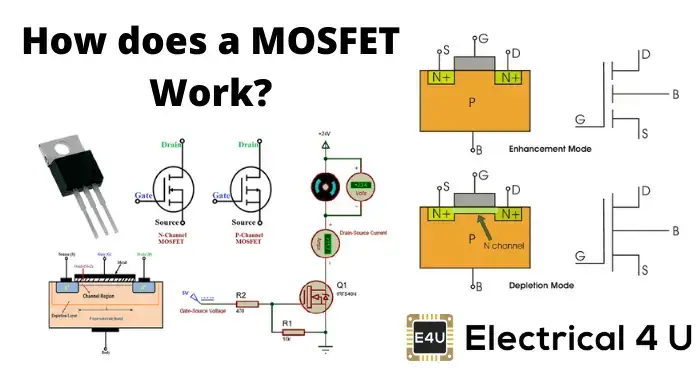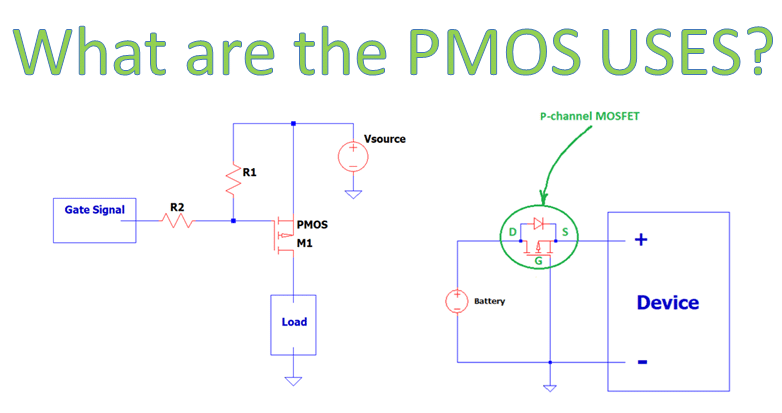Ah, now you’re askin’ about them P-channel MOSFETs, huh? Well, lemme tell ya, it ain’t as hard as it sounds once you get the hang of it. So, a P-channel MOSFET is a kinda transistor. It’s used in all sorts of electronics, like in power supplies, motors, and even in them fancy gadgets we can’t live without nowadays. It works a bit different than the regular N-channel MOSFET, which most folks are used to. You see, the P-channel’s got a bit of a twist in how it turns on and off.

Now, first things first, what’s a MOSFET? Well, that stands for Metal-Oxide-Semiconductor Field-Effect Transistor. Sounds real fancy, don’t it? But it’s just a way to control the flow of electricity using a little gate, like a gate on a farm, only this one controls electric current instead of cows. When you put a voltage on that gate, it opens or closes, letting electricity flow or blocking it. Simple as that. But here’s where it gets different for P-channel MOSFETs.
For a regular N-channel, you need a positive voltage on the gate to turn it on. But for the P-channel, you gotta give it a negative voltage on that gate to turn it on. So when you hook it up, you’ll need to apply a negative voltage between the gate and the source, and that’s what gets it working. It’s like makin’ a door open only when you push it the other way – it’s all about the voltage difference.
The P-channel MOSFET is made of P-type material. Now, don’t get confused, that’s just a way to say it’s got more holes than electrons. Think of it like a bucket full of holes – the holes are what let the current flow, and these holes are what let the electricity travel through. On the other hand, N-type material is full of electrons. So with P-channel MOSFETs, the current flows from the source to the drain, but it’s the holes that are doin’ the work, not the electrons like in an N-channel.
Turning it on: To turn the thing on, you gotta put a negative voltage on that gate, and a positive voltage on the source. Once you do that, the P-type channel gets all nice and conductive, and the current can flow through. It’s kinda like if you wanted to let the water flow through a pipe – you gotta have the right pressure difference to make it happen.
Turning it off: Now, to turn the P-channel MOSFET off, all you gotta do is stop sending that negative voltage to the gate. Or, you can cut off the positive voltage at the source. Either way, it stops the flow of current, like shutting a valve on a pipe. The current ain’t got nowhere to go, so it just stops. Pretty simple once you get the gist of it.

Now, you might be wonderin’, why would you wanna use a P-channel MOSFET over the regular N-channel one? Well, it’s all about how you design your circuit. P-channel MOSFETs are real good for situations where you need to switch the high-side of a circuit – like when you’re working with the positive side of your power supply. They’re used a lot in H-bridge circuits for motors and in the power supplies for some of your electronics. In these cases, the P-channel makes it easier to control the flow of current and keep everything runnin’ smoothly.
But I gotta tell ya, they ain’t always as efficient as them N-channel ones when it comes to handling high currents. So, if you’re building something where current’s flowin’ high, you might wanna think twice and choose an N-channel instead. But for a lotta smaller, low-power stuff, the P-channel is just fine.
Why are they important? Well, like I said, you’ll see these P-channel MOSFETs used in all sorts of gadgets, from power converters to motor drivers. They help save power, make circuits run smoother, and even protect your devices from damage by controlling the current the right way. So, while it might seem a bit complicated at first, once you understand how it works, it’s just a matter of applying the right voltages at the right time.
One thing to keep in mind, though, is that these P-channel devices can be a bit more sensitive to how you apply the voltages, and you need to make sure you don’t go too far with them negative voltages, or you’ll mess up the whole thing. So, always double-check your circuit before you go powering it up. Don’t wanna burn out your parts!
So, that’s the lowdown on P-channel MOSFETs. Ain’t too bad, right? Just remember – negative voltage on the gate to turn it on, stop the voltage to turn it off. Easy-peasy. And if you need more info or wanna buy some, just look online or head to a parts store like DigiKey or eBay. They got what you need!

Tags:[P-channel MOSFET, transistor, electronics, voltage, gate voltage, MOSFET operation, power supply, circuit design]

